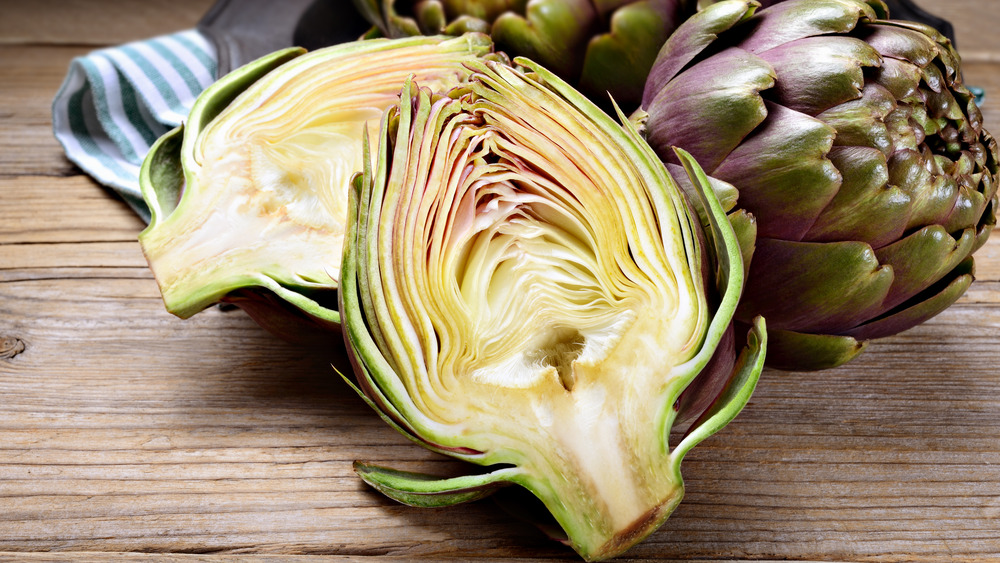Giada De Laurentiis' Tips For Picking Out The Perfect Artichoke
If you're an artichoke fan who has stuck to jarred or canned versions simply because you're not sure how to tell when a fresh artichoke is good, listen up — chef and Food Network personality Giada De Laurentiis has a few tips to pick the perfect artichokes.
One primary thing to keep in mind is what the leaves look like. You want the artichoke leaves to be tight and compact, and the artichoke itself should feel firm. If parts feel soft and squishy, or the leaves are spread out and seem loose, the artichoke is likely past its prime according to De Laurentiis' site Giadzy. The leaves and firmness are more reliable indicators than something like color, which doesn't help much in the realm of artichokes, as they can be anywhere from green to purple. There isn't a particular hue that indicates ripeness, and a few brown spots doesn't mean the artichoke has gone bad.
Not sure you trust your eyes? Try out the "squeak test," as Splendid Table recommends. If you hold an artichoke to your ear and listen closely after squeezing, you should hear a bit of a squeak — it indicates that the leaves have some firmness or resistance.
Take a look at the stem, too. You want to ensure it's dry and not soft or slimy. Depending on how you're preparing the artichoke, you may want to remove the stem for presentation, but you can keep it in the fridge for up to a week (via Real Simple).
Preparing your carefully-selected artichokes
Artichokes need a bit more TLC in preparation than some other vegetables, but it pays off in the end. Start by slicing off the base of the artichoke, including the stem, and taking off the outer layer of leaves (via Giadzy). You'll then want to cut off the thorns at the top of each leaf (as De Laurentiis shows in her tutorial, scissors are an ideal tool for this), about a half to quarter of an inch in length, as well as a small portion at the very top of the bulb. Then, you're ready to prepare them however you'd like!
One thing to be mindful of is that artichokes do oxidize, so if you're preparing them more than a few minutes in advance, you'll likely want to squeeze on a little lemon juice to keep them from turning an unappetizing shade of brown (via Kitchn).
Another quick tip? You'll want to make sure to remove the choke — a fibrous area near the middle — as it's unpleasant to eat. Many prefer to do this once the artichoke has been cooked, at which point you can just scoop it out with a spoon (via Ocean Mist Farms).
When it comes to methods of cooking, steaming is a very common way to prepare artichokes. You can also boil the vegetable, roast them, braise them to really infuse tons of flavor (via One Green Planet), or even toss them on the grill to get a bit of a char (via Eating Well).

